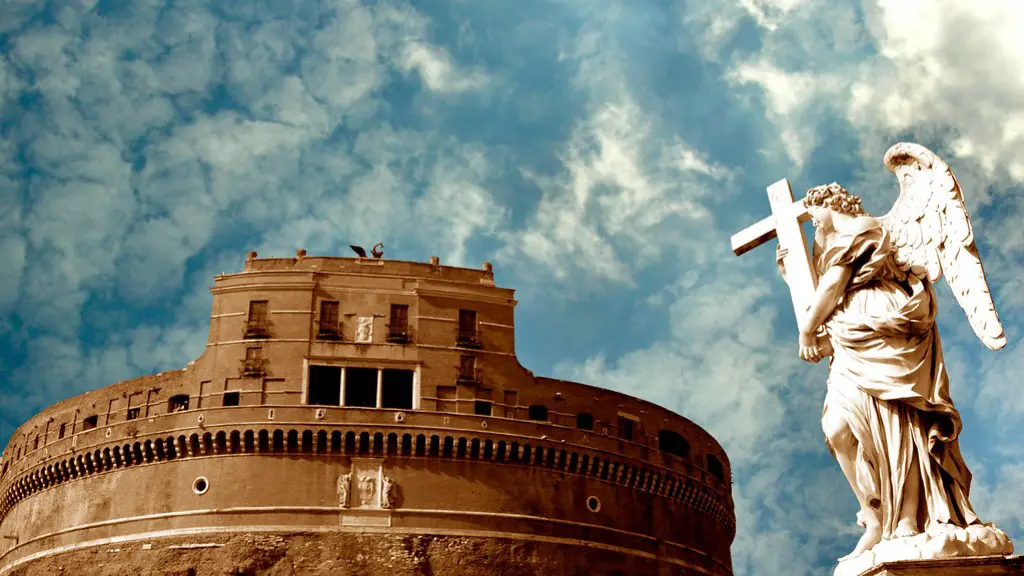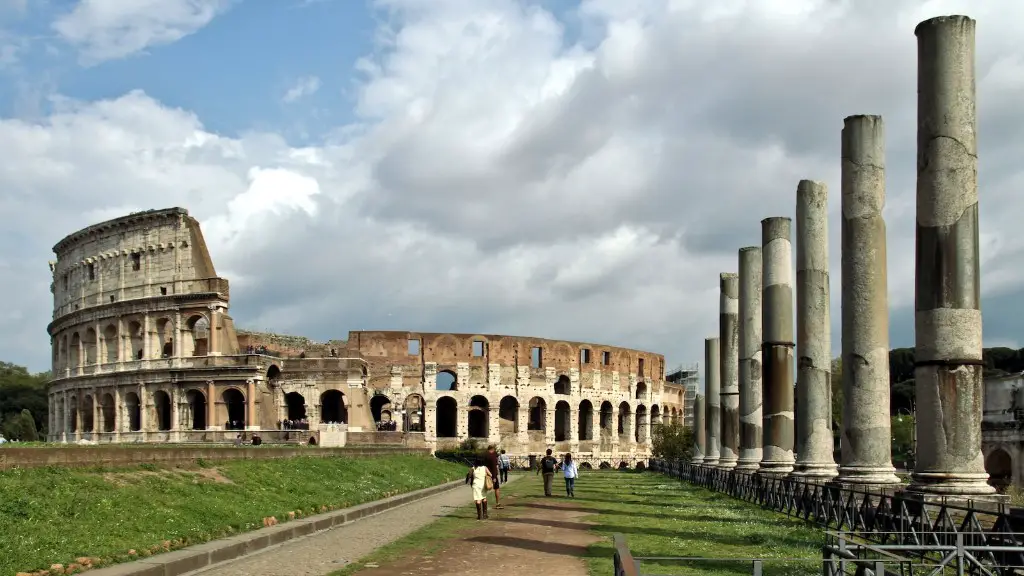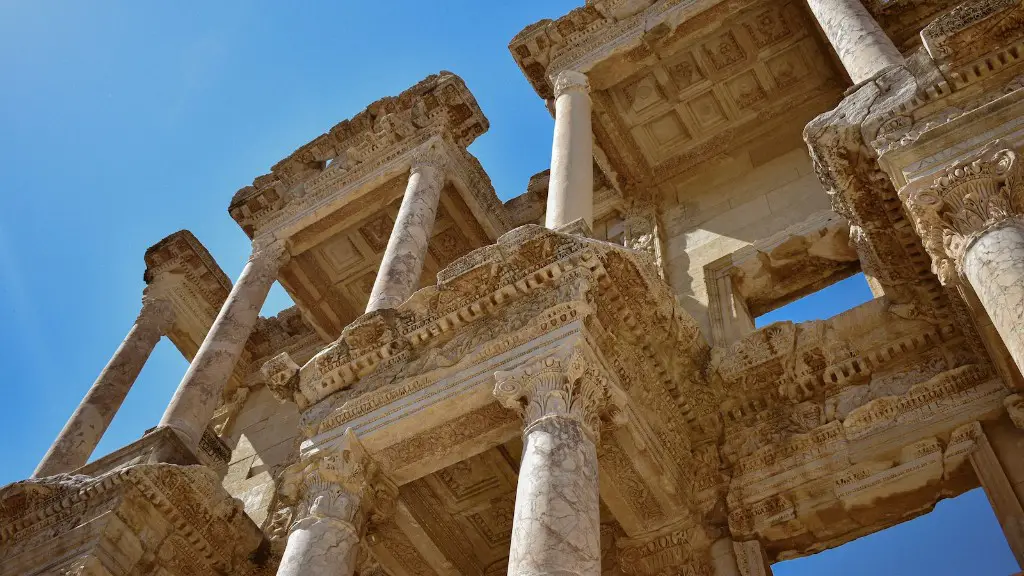The ancient Romans were a polytheistic people who believed in and worshiped a large number of gods and goddesses. The most important gods in the Roman pantheon were Jupiter, Juno, and Minerva. Jupiter was the king of the gods, Juno was the queen of the gods, and Minerva was the goddess of wisdom and war. The ancient Romans also believed in a number of lesser gods and goddesses, who were responsible for a wide variety of things.
The ancient Romans practiced a religion that was a mix of different cultures and beliefs. They had a pantheon of gods and goddesses that they worshipped, and they also believed in ancestor worship. Roman religion was also influenced by the Greeks, and the Romans adopted some of their gods and goddesses into their own pantheon.
What was the ancient Roman religion called?
The Religio Romana was the religion of the city of Rome in antiquity. The first gods held sacred by the Romans were Jupiter, the highest god, and Mars, the god of war and father of Rome’s twin founders, Romulus and Remus, according to Roman tradition.
The Roman religion was the worship of a large group of Greco Roman gods. A Roman priest was responsible for the proper ritual worship to the gods. The official Roman religion included the worship of Jupiter, Juno, Minerva, and Mars.
What were ancient Roman religious practices
The ancient Romans were polytheistic, meaning they worshipped many gods. They also worshipped spirits, or numina. Each river, tree, field, and building had its own spirit. Worshipping more than one numen was a part of early Roman culture.
From its earliest days, ancient Rome was polytheistic. This meant they believed in many gods and spirits, each with their own vital role to play. But the nature of Roman religion inevitably evolved throughout the centuries of the empire. The Romans increasingly came to see their gods as more like benevolent friends and helpers, rather than powerful and distant beings. This change in attitude is reflected in the way Roman religion developed over time.
What religion was Rome before Christianity?
The Roman religion began as animism, which is the belief that spirits inhabit everything around us, including people. The first citizens of Rome also believed that their ancestors’ spirits watched over them. Over time, the Roman religion evolved to include more polytheistic beliefs, such as the worship of gods and goddesses. However, animism still plays a role in the Roman religion, as evidenced by the practice of ancestor worship.
The three most important gods in Roman mythology were Jupiter, Juno, and Minerva. Jupiter was the protector of the state, Juno was the protector of women, and Minerva was the goddess of craft and wisdom. Other major gods included Mars (god of war), Mercury (god of trade and messenger of the gods), and Bacchus (god of grapes and wine production).
Why did Romans fear Christianity?
Christians in the Roman empire were persecuted for their refusal to worship the emperor or take part in sacrifice. This general dislike for Christians likely arose from their refusal to participate in activities that were expected of those living in the Roman Empire.
This is an important topic to consider when discussing the history of religion. It is important to note that the Romans did not always persecut people for their religious beliefs, but rather for their refusal to honor the traditional gods. This changed in 312 AD when Constantine became a convert to Christianity.
What did Romans say about Jesus
To the Romans, Jesus was a troublemaker who had got his just desserts. To the Christians, however, he was a martyr and it was soon clear that the execution had made Judaea even more unstable. Pontius Pilate – the Roman governor of Judaea and the man who ordered the crucifixion – was ordered home in disgrace.
Of course, Jesus was a Jew. He was born of a Jewish mother, in Galilee, a Jewish part of the world. All of his friends, associates, colleagues, disciples, all of them were Jews. He regularly worshipped in Jewish communal worship, what we call synagogues.
How is Roman religion different from Christianity?
The Roman religion was based on gods and goddesses while Christianity was based off of Jesus and his crucifixion on the cross for our sins. Both religions had different purposes, but in some ways they were similar. Virtue and destiny were two things that both religions shared.
One of the many factors that contributed to the fall of the Roman Empire was the rise of a new religion, Christianity. The Christian religion, which was monotheistic, ran counter to the traditional Roman religion, which was polytheistic (many gods). Christianity appealed to many people because it offered the hope of salvation and eternal life, in contrast to the Roman religion, which was focused on this world. Christianity also emphasized love, forgiveness, and compassion, which were appealing to many people who were tired of the violence and bloodshed of Roman society.
How many gods did the Romans worship
The Deii Consentes were the most important group of deities in the Roman pantheon. They were the twelve gods and goddesses who ruled over the different aspects of Roman life. Jupiter was the god of the sky and the leader of the pantheon, Juno was the goddess of marriage and childbirth, Neptune was the god of the sea, Minerva was the goddess of wisdom and war, Mars was the god of war, Venus was the goddess of love and beauty, Apollo was the god of the sun and music, and Diana was the goddess of the hunt and the moon. Vulcan was the god of fire and smithery, and Vesta was the goddess of the home and hearth. Mercury was the god of commerce and communication, and Ceres was the goddess of agriculture.
Christianity continued to spread through the territories of the western Roman Empire after its fall in 476. Over the next several centuries, it became the dominant religion in the city of Rome as well as the European regions over which the Roman Empire had ruled. Christianity provided a unifying force for the diverse cultures and societies of the Roman Empire, and its rise to prominence helped to pave the way for the development of a more unified European identity.
Which one is oldest religion in the world?
The word Hindu is an exonym, and while Hinduism has been called the oldest religion in the world, many practitioners refer to their religion as Sanātana Dharma (Sanskrit: सनातन धर्म, lit. eternal law or eternal path). Dharma refers to a set of beliefs and practices that are “intrinsic” to Hinduism, and Hindus often use the term to describe their religion in its entirety.Sanātana Dharma is also sometimes referred to as Vedic Dharma or Āgamic Dharma, as it is based on the Vedas, a body of sacred texts that are the foundation of Hinduism, and the Āgamas, a body of Hindu scriptures.
Hinduism is a rich and diverse religion with a long history. It is the oldest religion in the world, according to many scholars, and has roots and customs dating back more than 4,000 years. Today, Hinduism is the third-largest religion in the world, with about 900 million followers. Roughly 95 percent of the world’s Hindus live in India.
Hinduism is a complex and multifaceted religion, with a variety of beliefs and practices. Hindus believe in karma, reincarnation, and the caste system. They worship a variety of gods and goddesses, and believe in the power of yoga and meditation. Hinduism is a unique and fascinating religion, and its long history and diversity make it one of the most interesting religions in the world.
Final Words
The ancient Romans practice a religion that is a mix of Roman polytheism and early Christianity. Roman polytheism is the worship of many gods, which is similar to the Greek pantheon. Early Christianity is the belief in Jesus Christ as the Son of God who came to Earth to save humanity from their sins.
In conclusion, ancient Rome practiced a variety of religions including Christianity, Judaism, and Paganism. Rome was a religious melting pot and this is reflected in their architecture, art, and literature.





